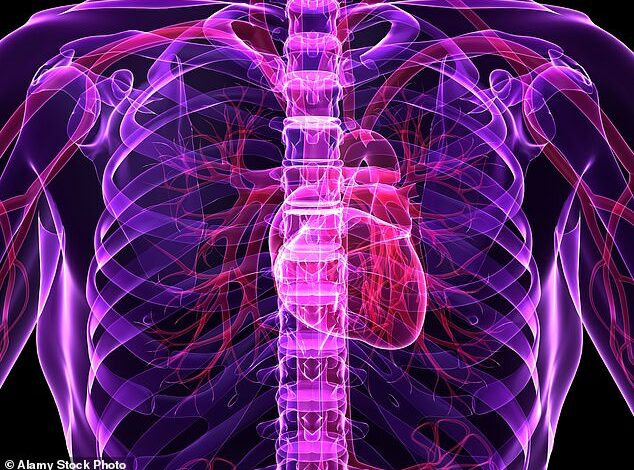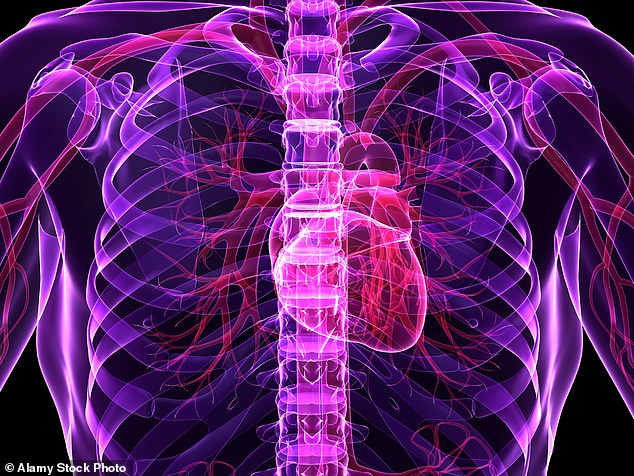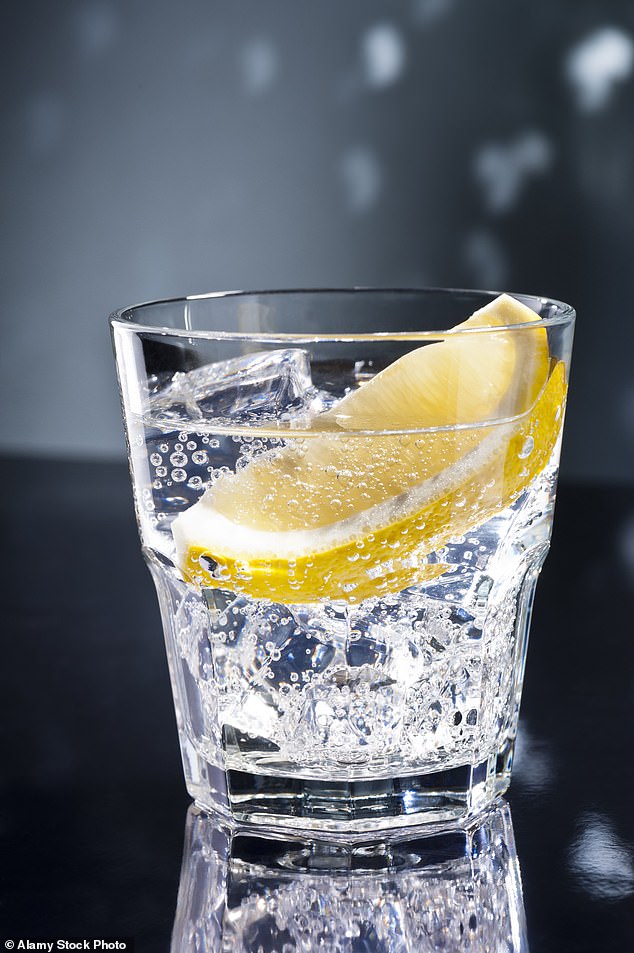How a five-minute DIY quiz can be as accurate in determining your heart attack risk as clinical trials and blood tests






A new home health questionnaire takes just five minutes to complete and could potentially protect you from a heart attack.
Research by Swedish scientists shows that the do-it-yourself quiz is as accurate in identifying those most at risk as clinical trials that use blood tests and blood pressure measurements.
Heart attacks, which occur when the blood supply to the heart is blocked, usually by a blood clot, cause around 20,000 deaths in England and Wales each year, often without warning.
Healthy arteries are smooth inside. But when they become clogged with plaque, blood flow is restricted, leading to clots. Symptoms include chest pain and shortness of breath. However, many people don’t have obvious signs and are unaware that they are at risk until they actually have a heart attack.
A 2022 study found that 42 percent of participants with no known heart disease or symptoms had fatty deposits in their heart arteries; 5 percent had significant blockage of arterial blood flow.

Heart attacks, which occur when the blood supply to the heart is blocked, usually by a blood clot, cause around 20,000 deaths in England and Wales each year, often without warning
Currently, doctors rely on high blood pressure levels as an early warning sign. Blood tests for levels of fats, cholesterol, sugar and proteins can also reveal risk.
Researchers from the University of Gothenburg have now created a 14-question survey to determine who is most likely to develop atherosclerosis (a precursor to heart attack), reports the Journal Of The American Heart Association.
The test includes questions about age, gender, weight, waist circumference, smoking, high blood pressure, high blood fat, diabetes and family history of cardiovascular disease.
The team designed their questionnaire using data from 25,000 people aged 50 to 64. They all had CT scans to assess their level of atherosclerosis (the thickening or hardening of the arteries) and then answered questions about their health and lifestyle. By comparing CT scans of their hearts with the answers, researchers identified the most relevant overlapping material and used this to design the questionnaire, which was able to detect 65 percent of those at highest risk for heart disease.
In contrast, measuring only the “bad” LDL cholesterol levels may be less accurate: A 2009 study in the American Heart Journal found that nearly half of patients hospitalized with a heart attack actually had normal or low LDL levels.

Currently, doctors rely on high blood pressure levels as an early warning sign. Blood tests for levels of fats, cholesterol, sugar and proteins can also reveal risk
Professor Chris Pepper, clinical director of cardiorespiratory services at Leeds Teaching Hospitals NHS Trust, said of the new research: ‘Although the test will not detect 100 per cent of cases, it could help doctors identify who is most at risk and needs further investigation.’
British doctors already use a mathematical algorithm (called QRISK), based on health data and a blood test, to determine a person’s heart age and risk of heart disease. But this new test (not yet available to consumers, because it needs to be tested in larger clinical trials) is designed to be simple enough for patients to do at home.
The new study ‘suggests that CT scans are not needed in many cases’, says Professor Pepper. ‘It only takes a few minutes, so there are few barriers to doing it. [it].
A blood test could soon be available to detect those most at risk of dying from heart failure, the European Journal Of Heart Failure reports. Researchers found that patients with higher levels of a protein, neuropeptide Y (NPY), were 50 percent more likely to die from a heart complication than those with lower levels. Heart nerve cells make NPY when the heart is under stress, causing dangerously irregular heartbeats.
Secrets of an A-List Body
This week: actress Nicole Kidman’s waist
The 57-year-old star was seen at the Paris Olympics in a two-piece outfit that showed a glimpse of her midriff. Her active lifestyle includes hiking, swimming, snow sports and Ashtanga yoga.

Nicole Kidman, 57, was seen at the Paris Olympics in a two-piece outfit that showed a glimpse of her midriff. Her active lifestyle includes hiking, swimming, snow sports and Ashtanga yoga
What to try: The standing wood chop builds powerful core muscles. With your feet slightly wider than hip-width apart, hold a weight in front of you at chest height with both hands. Lower it to the outside of your right foot, bending your knees slightly and rotating your feet in the same direction as the weight. Then swing the weight back up over your torso and over your left shoulder. Do 15 of these chopping movements, then repeat on the other side. Complete three sets, twice a week.
Try this
Olbas Breathe Easy Patches (£6.99 for a pack of six, most supermarkets) are infused with essential oils thought to have a decongestant effect. They can be applied to bedding and clothing for up to eight hours of relief.

Human Chemistry
The chemicals that play an important role in the body.
This week: Citric acid
Citric acid is a weak acid found in citrus fruits and is an important part of the ‘citric acid cycle’: a series of biochemical reactions that releases energy stored in nutrients in the body.

Citric acid is a weak acid found in citrus fruits and is an important part of the ‘citric acid cycle’ – a series of biochemical reactions that releases energy stored in nutrients in the body
It also plays a role in reducing inflammation and preventing kidney stone formation. A 2007 Duke University study found that drinking a cup of lemon juice diluted in water increased citrate in the urine of kidney patients and led to less kidney stone formation.
Researchers thought this “lemonade therapy” could be an effective alternative for patients with low urine citrate levels who cannot tolerate existing therapies (e.g., oral potassium citrate replacement).




